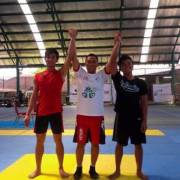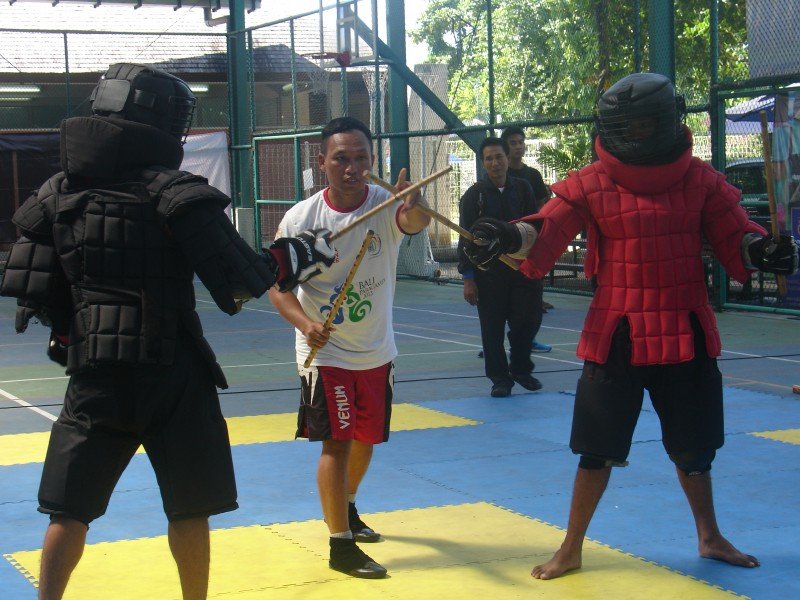No products in the cart.
2 Deaf Mute Stickfighters selected for World Championship

Two deaf mute eskrimadors (stickfighters) from the the BSF Asia/CMAA Special Needs Martial Arts program won themselves a place on the Indonesian team for the next World Championships in August in the Philipines.The selection trials were held as part of BSF Asia’s Friendly Games held recently in Bali,at the excellent facilities of Bali International School.
By coming first and second respectively,I Dewa Gede Ari and I Komang Satriawan are now getting ready for the biggest fights of their young life.Together with Made Sudiawarta and Rodney Holt (masters division),they make up the Balinese continent that will fly out on August 2,2014.
Arnis Eskrima, Philippine Stickfighting is a sport derived from the traditional martial arts of the Philippines where in the past combatants fought, many times to the death, with fire hardened rattan cane. It is suggested that historically the art came originally from India eventually being introduced to the Philippines.
The system developed through history as varying ethnic groups evolved the fighting style. The famous explorer Ferdinand Magellan met his fate on the shores of the Visayas islands near Cebu where he was killed by a local warrior skilled in the art of Arnis Eskrima. In later years Spanish influences also played a part in the evolution of this form of combat.
Arnis Eskrima was last used in warfare and the field of modern human conflict during World War Two. Today elements of Arnis Eskrima are taught in varying forms relative to modern military combat in several armies throughout the world.
In modern sporting competitions two athletes wearing body protection compete in full contact fighting events using either single or double sticks made from rattan. The competitors wear heavily padded helmets with neck protection and metal face grills, heavily padded jackets, elbow and forearm protection, gloves, thigh and knee protection. Athletes may also compete in minimal body protection “Kulata” events. 
Competition is held in a marked square area called a ring. A good bout between two well-matched athletes is exceedingly fast displaying strength, endurance and skill. Competitors deliver powerful, elliptical strikes at blurring speeds as each tries to dominate his opponent. At the same time, each athlete must guard his head and body against the other’s strikes by dodging or blocking the blows.
To win a competition an athlete must successfully dominate as many of the rounds in a bout as possible, achieved by demonstrating superior skill in both the attack and defence while displaying high levels of fitness and endurance (see Scoring). The action may range all over the ring as the athletes weave about or press forward creating openings for blows while defending and blocking relentless attack.
In a “Kulata” event competitors will only wear headgear, elbow guards and gloves while sticks will be padded. Good stick fighters “Eskrimadors” must be strong, quick, skillful, and in excellent physical condition. They also should have the courage and determination to continue in spite of pain and exhaustion. “Eskrimadors” compete as amateurs as members of an organization or a team in tournaments or as an individual competitor. The sport has not yet developed to a professional level where competitors accept prize money.
Single and double stick sparring events are organized with athletes competing in different age groups to include, 50 and over: 50 years of age and over, senior: 40 years of age up to 49, open: 18 to 39 years of age, and junior: up to 17 years of age in both male and female categories in adult and junior divisions. Divisions are further categorized by weight groupings. Eskrido, Knife sparring and form events are organized along similar lines .
